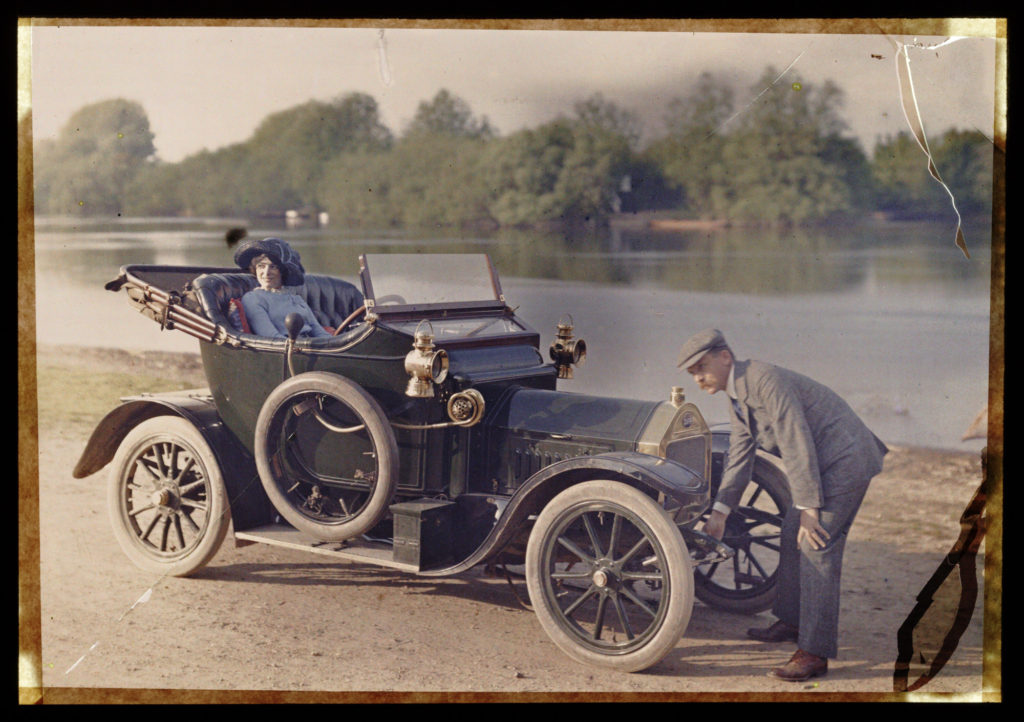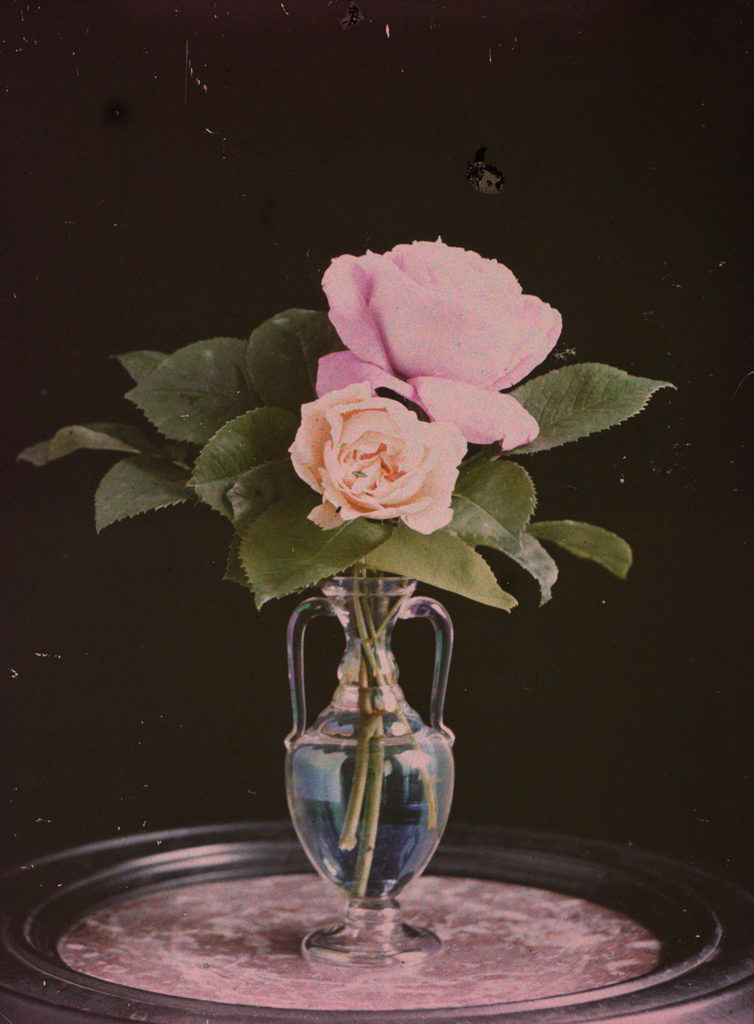https://blog.scienceandmediamuseum.org.uk/autochromes-the-dawn-of-colour-photography/
The first practicable method of colour photography was the autochrome process, invented in France by Auguste and Louis Lumière. Best known for their invention of the Cinématographe in 1895, the Lumières began commercial manufacture of autochrome plates in the early 20th century.
HOW DO AUTOCHROMES WORK?
Autochrome plates are covered in microscopic red, green and blue coloured potato starch grains (about four million per square inch). When the photograph is taken, light passes through these colour filters to the photographic emulsion. The plate is processed to produce a positive transparency. Light, passing through the coloured starch grains, combines to recreate a full colour image of the original subject.

Anon, Couple with a motor car, c.1910, autochrome
Emile Guiton
Emile Guiton was probably the most prolific of the Jersey photographers who chronicled island life during the first half of the 20th century. A substantial collection of his pictures is contained in the photographic archive of La Société Jersiaise.
Born in Jersey in 1879 he had a keen interest in history and was a member of La Société Jersiaise, served on its executive committee as joint honorary secretary, and was curator of the Museum and editor of the Annual Bulletin.
He also realised that history was being made during his own lifetime and he recorded the development of his native island from the turn of the century until his death in 1972. He experimented with Autochrome colour very early in the century.
Not only did he record events and activities during his own lifetime, particularly agriculture, but he had a fascination with the past and chronicled with his images many archaeological excavations (his pictures of the interior of La Hougue Bie remain some of the best in existence) as well as photographing Mont Orgueil Castle and other coastal fortifications, sites of geological interest, and architecture. Guiton had a particular interest in the design of Jersey houses over the centuries, and particularly in different styles of arches to be found in the island.
He was present at many major events, including the Liberation in 1945 (he had also taken photographs during the German Occupation, and the proclamations of successive monarchs in the Royal Square.

Emile Guiton 
Emile Guiton
